Introducing Longyearbyen: A Morning Bus Tour
Longyearbyen may be a small town comprising an average of less than 3,000 people but it is spread out over a considerable area of some 62.7 square km. And as we well knew from previous experiences in the Arctic, winter walking of any sort, even with the very best gear, in slippery or deep snow is not easy, nor is it particularly pleasant even at relatively mild temperatures of around minus 20°C. Oh, and walking on re-frozen snow can be treacherous….
And so reluctantly, we opted for a morning bus tour of the township. Much against our better judgment, we thought.... Once again, we were astonished by the number of tourists. Not only had we again secured the last two seats on the tour but whilst waiting for our bus, the surrounds of our hotel were jammed packed with tourists waiting to go on numerous other tours. It was, we had to say - just a bit different from Extreme Arctic Russia..... It was not our scene at all. But in all honesty, the guests were very pleasant and anyway - how could we possibly complain, being tourists ourselves? But it sure was a shock.
A rather lovely tourist experience however, was meeting with an Irish couple David and Barry. A delightful and entertaining pair, we were to "collide" with them on several occasions during our travels.
Quirky Rules of Longyearbeyen and Svalbard
Our driver Wiggo (pronounced Viggo) was a delightful man. An ex-military officer, he was the perfect driver/guide for our half-day tour. A mixture of intense passion, touched with a wonderful, twinkling sense of humour, he somehow managed a precarious balance of an informed, yet very entertaining individual. Nothing tacky. Nothing corny. Everyone knew him.... And everyone loved him. Even the office staff at the hotel spoke highly of Wiggo.
As he drove our coach through some pretty challenging routes on our snowbound, mountainous journey around Longyearbyen township, Wiggo somehow managed to maintain a constant dialogue about the history of Svalbard and Longyearbyen, as well as some of the quirkier challenges for the authorities and inhabitants of such an extreme Arctic environment. And not surprisingly, living in a solitary, environmentally fragile destination in the northernmost part of the planet, demands some pretty strenuous, if rather bizarre, rules and regulations. In fact, there are laws in Svalbard that are found in few, if any other parts of the world.
Anyone can come to live in Svalbard. It is a visa-free zone. There are no work permits required, and there is no timeframe for the length of stay, regardless of citizenship. Well almost correct, but not quite....
Residency is in fact, subject to some pretty stringent factors. Firstly, a person must have a job and be able to support themselves. They must be healthy and fit. And they must have somewhere to live. In basic terms: you can come and live in Svalbard as long as you have some sort of accommodation, and you can independently support yourself. There is no welfare, nursing care nor any community or government support for the elderly. There is a hospital with eight beds and a dental surgery, but (as we were to find) the services are basic and there is just one doctor. Anyone seriously ill must be air-lifted to Norway. Pensioners may live in Svalbard but once they require care - or money - they must leave the archipelago. Similarly, people with disabilities which prevent work are not permitted to stay. And pregnant women must leave Svalbard to give birth but can return once they don't require further medical attention.
Oh yes, and even dying on Svalbard is prohibited! Not that it is illegal to die. With permafrost, there is just no place (nor room) to bury the dead. Nor does anything of a biological nature readily decay.
Svalbard is obviously no place to plan a full life cycle. And accordingly, the demographics are relatively distorted. There is an over-representation of males (54% males and 46% females) - mainly as a result of the mining industry up until the recent closure of most of the coal mines, being the major employer. Today, key employers are the educational facilities of the University of Svalbard, now a global centre for Arctic Research and the schools, government agencies and more recently a rapidly increasing tourist industry. There are also international teams associated with the Global Seed Vault in Longyearbyen.
The highest populations are those aged between 10 to 44 years of age. Turnover is very high with an average stay in Longyearbyen of just 6.3 years. It certainly is a young person's place. And I'm sure it would be a fun place to live. For a while.
Longyearbyen however, is not for everyone. Interestingly, on conversing with the hotel staff and a number of other young people living in Longyearbyen, the issue of the long dark winter was often raised. "It can really do your head in" one waiter explained. "I love the beginning of winter and the darker days but after a few months, it really gets you down. And some people become seriously depressed."
Understandably, living in a township where most people are of a similar age group and occupation, must shape a person’s sense of place and/or community. A transitory and artificial society, it would certainly be an unusual lifestyle for any period of time.
Wiggo, who would not have been aged more than in his late sixties, was first to explain that he was the second oldest resident in Svalbard. Laughingly, he explained that the average age of a resident of the archipelago was just 30 years. "And there are baaaabies everywhere!" he roared in his heavy Norwegian accent. He went on: "Can you imagine what a toxic combination of conditions we have in Svalbard? With such a young, fit population, four months of dark polar nights and nothing to do other than work and drink duty free alcohol, what else can young people be expected to do?"
Wiggo went on to explain how extremely difficult and expensive it was for people to find housing or accommodation in Svalbard. All land is owned by the government, although it is possible to build premises on government land, the costs are virtually prohibitive. And of course, a person would only own the house and not a house-land package. Consequently, companies find it difficult to attract employees and there have been occasions when a person who has been recruited is unable to start their job because they cannot find accommodation.
Other quirky rules on the archipelago include restrictions on alcohol consumption per individual per month*, (as mentioned) a ban on individuals venturing from town without a rifle to frighten off polar bears and a complete ban on cats because they "might harm the wildlife". Interestingly, the last cat in Svalbard - the famous Kesha - was granted his tenure for life because he was apparently mistaken for an Arctic fox. Goodness knows whether this was an urban myth or not, but how could a cat do more damage than an Arctic fox, or for that matter a polar bear? Let alone, a human with a gun...? Or for that matter, be mistaken for a fox?
*These restrictions are mainly historical dating back to the mining days when officials could buy as much wine as they wanted but the miners – who mostly drank beer or liquor, had limits placed on consumption. Private individuals residing in Svalbard must purchase their alcohol quota in Svalbard and are not able to import tax-free alcohol from the mainland to Svalbard.
Our Tour of Longyearbyen
Prior to our visit, we wondered why the capital of Svalbard had such an Anglo-Saxon sounding name. Longyearbyen was not named because a year in Svalbard seemed such a long time, but it was in fact named after American John Munro Longyear, whose Arctic Coal Company started coal mining there in 1906. Just for interest, the Store Norske Spitsbergen Kulcompani (SNSK) took over mining operations in 1916, and today still conducts some coal mining. As mentioned, since 1932, the Russian state-owned Arktikugol company also still conducts coal mining in Svalbard.
Our morning tour took us around the winding roads of Longyearbyen, stretching from the foot of the left bank of the Longyearbyen Valley along the shores of the Adventfjorden, the short estuary leading into the Isfjorden on the west coast of Spitsbergen.
Roads here are not named, just numbered. Housing looked sophisticated, totally unlike the mostly Soviet-styled buildings that were so familiar to us in extreme Arctic Siberia. Like Russia however, because of the permafrost, houses are built on poles above the ground to negate the devastating movement caused as a result of melting upper soil layers in the summer season. And again like Siberia, all water and gas pipes are above ground to avoid the impact of melting permafrost.
Longyearbyen, surrounded by high mountainous countryside is highly prone to avalanches. According to commentators, it is the number one cause of death in Svalbard, after Arctic expeditions and polar bears**.
**Interestingly, Wiggo told us that the death rate through expeditions was alarmingly high with 896 people dying or disappearing (presumably dead) last year. Mostly the cause of death is unknown because the bodies are not often recovered. To mitigate the avalanche problem, authorities have developed models for warning systems. Furthermore, the surrounding mountains are crisscrossed by steel "snow fences" to alleviate the chances of snow build up causing major avalanches.
Several coal mines are still evident on the steep slopes. Perched on the side of a steep mountain slope, Gruve 3, one of the closed coal mines, was a frozen lonely site to behold. Goodness knows what terrible conditions the people who worked there in early times would have endured, let alone the chances of major avalanches.
Along Adventfjorden (Adventfjord Valley) Toward the Global Seed Vault
As Road VEI 305 wound up beside the frozen Advent Bay, we were rewarded with spectacular views of the fjord and the surrounding, mellowing solitary mountains. To the north soft, cotton candy clouds glowed gorgeously pink above snow polar peaks. Even the mountains glistened with a reflected rosy hue. See video link for a view of the frozen Adventfjorden https://youtu.be/hM65H7DgwMs
As we neared the top of the road toward the Global Seed Vault, Wiggo stopped our bus at a lookout over Longyearbyen. The views were sensational. We could even see out as far as Svalbard Airport on the edge of the mighty Isfjord. The wildness and sheer remoteness of the environment was breathtaking. Once again, in the far distance, steely grey snowstorm clouds contrasted ominously against the pastel tones of a fatiguing, feeble sun. And it was only 1:30 pm.... Svalbard was indeed spectacular.
"Doomsday Fall Back": The Global Seed Vault
The seed vault as its name suggests, is a secure fallback facility for the world's crop diversity. Built deep into a mountainside, it provides protection against accidental loss in traditional seedbanks due to mismanagement, accident, natural disasters, war and/or civil strife. The facility has the capacity to store 4.5 million seed samples.
The vault is owned by the Kingdom of Norway who in 2008, almost fully funded the initiative at a cost of some USD 8.8million. The Seed Vault is managed under terms spelt out in a tri-partite agreement amongst the Norwegian government, the Crop Trust and the Nordic Genetic Resource Centre. An international Advisory Council provides guidance and advice.
Any gene bank interested in depositing safety seed duplicates in Svalbard Global Seed Vault for long-term storage are welcome to do so provided that the conditions in the Deposit Agreement are fulfilled. Interestingly, Norwegian law prohibits the storage of genetically modified seeds at the vault.
Spitsbergen was chosen as a most appropriate site for the vault because of its Arctic environmental factors. Seeds are stored at minus 18 °C; the permafrost surrounding the vault chamber helping maintain the very low temperature should electricity supplies fail. Whilst the initiative of the vault was impressive, the building especially as it was closed, didn't have a lot going for it. An odd, triangular building lying flush into the mountainside, really....
It sounded like Wiggo would have been happy to extend our tour but a number of passengers had flights to catch and so we returned to our hotel in the early afternoon. It was an interesting and dare I say it for one who hates tourist activities, a very worthwhile tour.
A Pleasant Afternoon in Longyearbyen
Although it was only early afternoon when we arrived back at our hotel, we both felt ridiculously tired, hungry and not unlike us of course, having a drink or two! And it certainly didn't take much to settle into a light lunch and a few beers at the hotel's very pleasant Barentz Gastropub.
Needless to say, nor did it take much to convince us to put off our walk of the township until the next day. An afternoon rest was just what we needed. It must have been the short days and early sunsets....
Late in the afternoon, I awoke however, to the horrible realisation that I had lost my multi-focal glasses - without which I can't see a thing. I guessed I must have dropped them on our bus tour. But of course, I had no idea. And how would anyone find them in the snow? I can still hear Alan's weary voice "Stop wearing those glasses on top of your head...". "Well, that's all very well but I can't walk down steps wearing my multi-focals.... And where else can I store them with such easy access?" I groaned. Alan did not bother to dignify a response.
Front Desk staff Olga and Cecilia were terrifically helpful. They immediately rang the bus company and told me they would let me know if anyone had handed them in. Despondent, I knew I had no hope. I did have a spare pair, but they were older and nothing as acceptable as my normal glasses.
At 5:00 pm, to my delight Cecilia rang me to say that Wiggo had found my glasses and had taken the trouble to drive back to the hotel and dropped them in at the front desk.
Relief..... I just hope he received my written note of thanks that I wrote to him.... Thank you Wiggo.

 Longyearbyen, Svalbard, Svalbard and Jan Mayen
Longyearbyen, Svalbard, Svalbard and Jan Mayen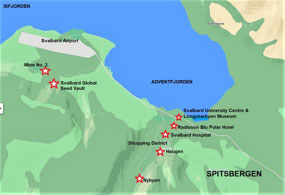
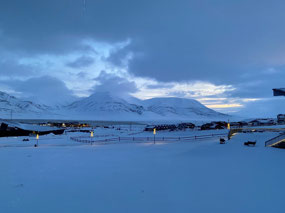
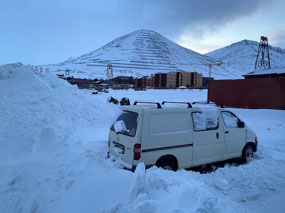
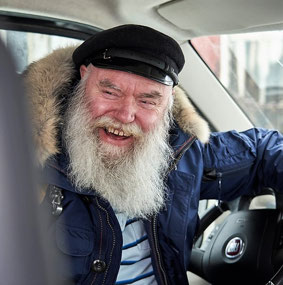
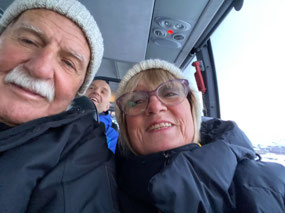
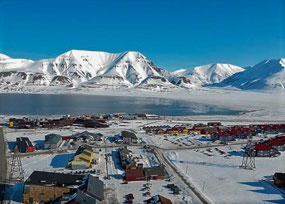
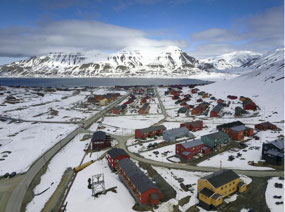
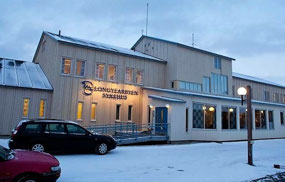
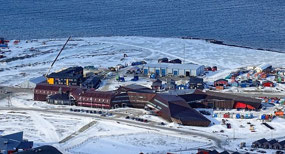
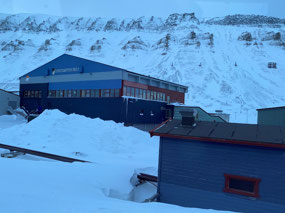
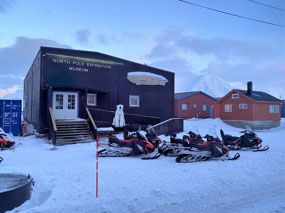
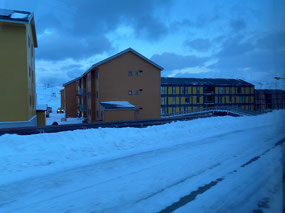
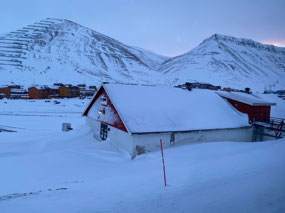
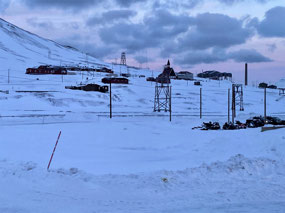
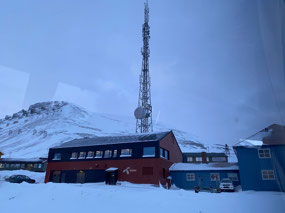
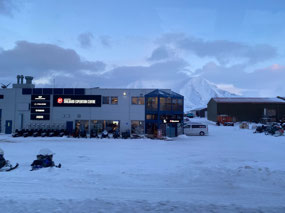
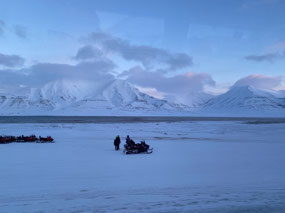
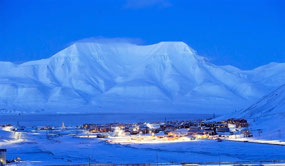
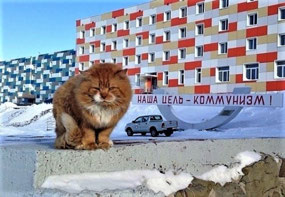
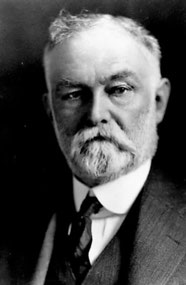
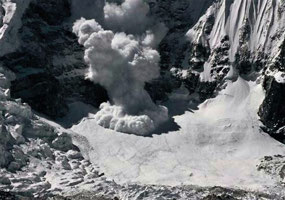
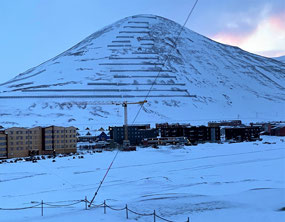
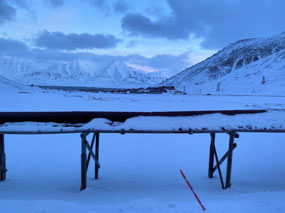
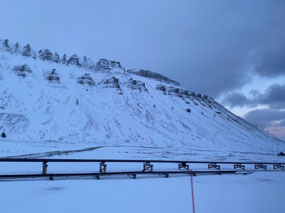
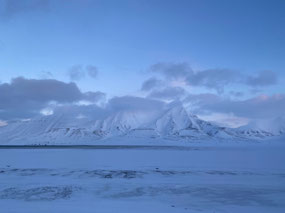
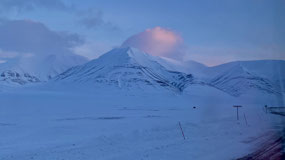
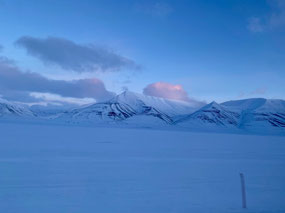
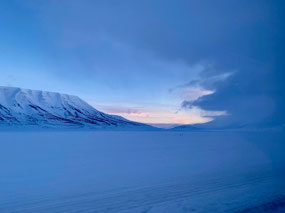

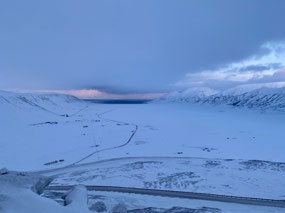
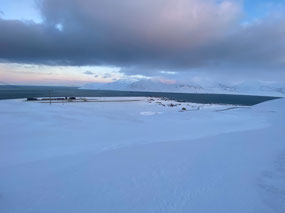
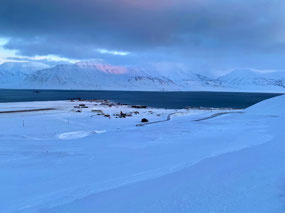
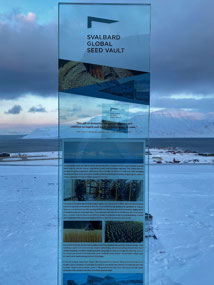
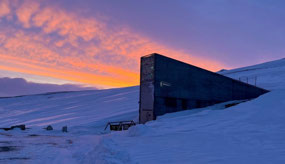
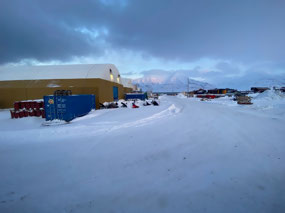
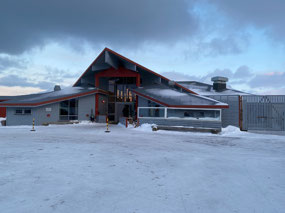
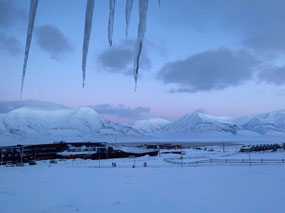
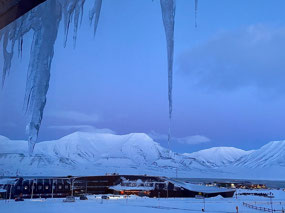








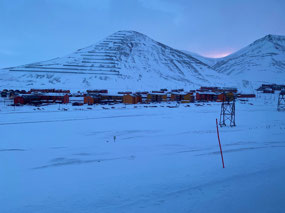
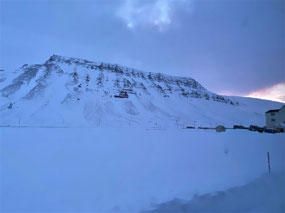
Margaret McLaughlan
2023-07-24
Thanks for sharing. My mother never lost her glasses because she always said she could not talk to anyone without her glasses on! The avalanches and associated over 896 deaths are a real concern and for your safety and for the Seed Bank for Seed Diversity as the Svalbard the fastest warming place on earth https://www.channelnewsasia.com/world/climate-change-svalbard-norway-arctic-circle-residents-fastest-warming-place-earth-3478406